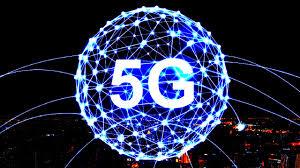Notifications

8 minutes, 47 seconds
-54 Views 0 Comments 0 Likes 0 Reviews

When I think about how much the world has changed in the past few years, it’s clear to me that fast, reliable internet is no longer a luxury—it’s a lifeline. I’ve relied on it for work, entertainment, health tracking, and staying in touch with family. But the real game-changer for me was when 5G started rolling out. Suddenly, buffering disappeared, cloud apps ran smoother, and connected devices started talking to each other like they were in the same room.
Now that 5G has gained traction in cities and is gradually moving to smaller towns, I’m starting to think ahead. What comes next? What happens when we’ve all adapted to this ultra-fast, low-latency network? I’ve spent a lot of time reading about 6G, edge computing, and network slicing, and I realize we’re just scratching the surface of what connectivity can do.
Whether it's enhancing remote surgeries, boosting autonomous vehicle performance, or streaming high-quality video in milliseconds, this new wave of connectivity is setting the stage for technologies we’ve only imagined before. Much like how vape juice evolved to offer a smoother, more customizable experience for users, connectivity is being redesigned to be more efficient and tailored to individual needs.
With 5G already in play, I’ve noticed a few significant differences in how I use the internet and connected devices. These changes may not be immediately obvious to everyone, but once you experience them, there’s no going back.
Here’s what stood out to me:
Near real-time response: I no longer wait for files to upload or stream to stabilize—it just happens. This is great not just for work calls but also for things like cloud gaming.
More stable connections in crowded areas: Whether I’m at a concert or in a busy café, the signal holds up better than it did with previous generations.
Smart home devices working seamlessly: Lights, security systems, and appliances respond faster and more predictably.
Battery-efficient wearable tech: Devices now communicate more efficiently with the cloud, conserving energy and improving uptime.
These benefits are all connected to one core change: reduced latency. That single improvement has ripple effects across industries and daily life. And what excites me even more is that this is just the beginning.
It might seem early to talk about 6G, but I think it’s important to understand what the industry is working toward. Based on what I’ve read and followed through industry events, 6G is likely to launch sometime around 2030, and its development is already underway. The focus isn’t just on speed. It’s about making networks more intelligent, adaptive, and even more secure.
Here are a few features I expect from the next phase of connectivity:
Ultra-low latency: We're talking sub-millisecond speeds—essential for things like tactile internet and virtual surgeries.
AI-powered networks: The network will learn from user patterns and optimize itself without manual input.
High-frequency spectrum use: This enables data to travel faster but will require newer infrastructure and hardware.
Integrated satellite communication: Allowing consistent coverage even in remote or rural areas.
This direction gives me hope for more inclusive access, especially in regions that still struggle with basic connectivity. It also opens up new possibilities for immersive tech like AR and VR, which currently rely on strong bandwidth to function smoothly. I can already imagine virtual classrooms or job training simulations becoming standard learning tools, thanks to the next generation of networks.
From a personal angle, these advancements aren’t just about headline-making tech. They affect how I interact with devices and content on a daily basis. I see this especially in how smart systems are becoming more integrated. One example is the way streaming platforms now recommend shows that actually match my preferences—thanks to faster, data-driven insights. I think we’ll see the same logic applied to health devices, gaming systems, and even lifestyle tools.
Imagine a future where your phone automatically switches to the most efficient network band based on your activity—like downloading a large file versus checking email. Or think about how much smarter home automation could become when latency drops even further. Devices would respond to your habits without you even realizing it.
It’s not just about being fast—it’s about being smart. And when you combine that with cloud AI, wearable sensors, and on-the-go access, it creates a tech experience that feels seamless, predictive, and helpful. Much like how product options expanded in the nicotine salt market to meet user preferences, I expect personalized network performance to become a feature users can choose and adjust.
As I think about all this, the main takeaway for me is that we’re entering a period where connectivity isn’t just a background feature—it’s the foundation for everything else. Whether I’m upgrading my laptop, picking a new smart speaker, or installing an IoT security system, network capability is now something I consider just as seriously as price or design.
The good news is that these changes don’t require you to be a tech expert. All it takes is staying curious, staying informed, and choosing tools that align with how you live and work. If you're someone who enjoys learning about new technologies—just like I enjoy exploring product innovations in areas like vape juice—then you’ll probably find this journey just as exciting as I do.
So, while 5G has already transformed how I connect, I’m more excited about where we’re heading next. And from what I see, the future is not just fast—it’s adaptive, intelligent, and built to serve people better. Whether it’s business, entertainment, or personal wellness, better connectivity is going to make everything more efficient and more meaningful.

